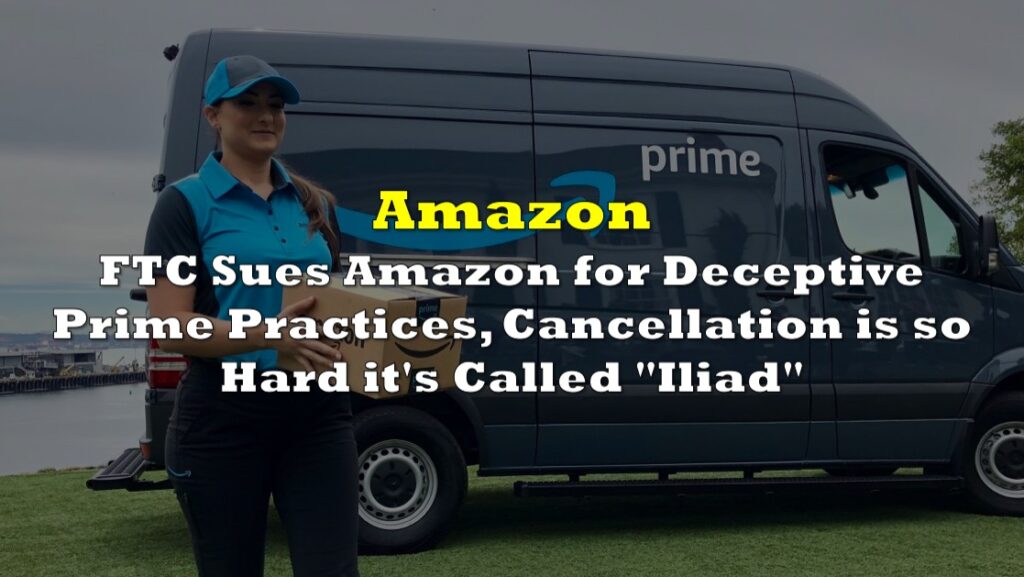Back in 2013, former Amazon (NASDAQ: AMZN) CEO Jeff Bezos promised eager consumers their packages would be delivered via drones within five years. Now, almost a decade later, those eager customers are still awaiting to see the capabilities of Amazon’s drone delivery service, despite the e-commerce giant funneling over $2 billion into the project and compiling a team of more than 1,000 employees.
According to Bloomberg, which cited various internal documents, interviews with current and former employees, as well as government reports, Amazon’s drone program has been plagued with numerous technical problems, safety issues, and a high employee turnover rate. In fact, a serious crash last year even caught the attention of aviation regulators, after several key safety features failed causing the drone to plummet to the ground, burst into flames, and start a brush fire.
Although aircraft subject to the testing phase is expected to suffer mishaps, current and former employees suggest the drone program was subject to unnecessary risks and urgent timelines as per the request of upper management. The company has faced increased pressure to keep up with its rivals, including Alphabet’s Inc Google Wing, which just recently expanded its drone testing program to deliver Walgreens packages within a 90-mile radius of a suburban area in Dallas, Texas.
For the most part, Amazon has been elusive about the testing of its drones, but in June 2020 the company revealed it was granted FAA approval to conduct flight trials. Commercial tests of its drone program in California and Texas are slated to commence as early as September of this year, delivering items under 5 pounds to customers. The e-commerce giant hopes to operate 145 drone launch stations which will deliver 500 million packages via drones each year, revealed internal documents cited by Business Insider.
However, reaching such a milestone has been riddled with various controversies, Bloomberg found out. Current and former employees revealed Amazon is prioritizing speed ahead of safety in an effort to beat its rivals. “Someone is going to have to get killed or maimed for them to take these safety issues seriously,” said former Amazon drone project manager Cheddi Skeete, adding that he was terminated last month after bringing forward concerns to upper management. “How can we bring these tests to more communities when we know we have problems.”
Back in 2013, Amazon hired software engineer Gur Kimchi to oversee the program which was later called Prime Air, and design drones that were light enough to not require too much battery power, but also strong enough to carry 5-pound packages, given that 85% of the items delivered by Amazon fall under that weight threshold. Kimchi made safety a priority, and created a work environment focused on fixing defects instead of rushing to meet deadlines. “The Prime Air group had a pretty strong safety culture,” one former employee told Bloomberg. “I remember even just the software meetings, we always had to open our meetings with someone volunteering a safety tip. They definitely weren’t playing fast and loose.”
But, given Amazon’s deadline of creating a commercial drone within five years, Kimchi soon faced heat over failing to deliver on the company’s promises. Head of Amazon’s consumer division Jeff Wilke showcased a prototype of the drone during a 2019 tech conference, announcing deliveries would commence by the end of the year. Although employees thought such a timeline was improbable, they feared to raise concerns. “He overpromised and underdelivered,” said one former employee.
In an attempt to make due on Wilke’s promises, Amazon hired Boeing Co. veteran David Carbon, who soon ramped up drone developement while embarking on cost-cutting measures, including moving facilities from England and France to cheaper Costa Rica. The prioritization of cost-cutting measures over safety soon became evident when an Amazon team conducted a flight test at a Crows Landing testing facility in California last year. Some of the employees were concerned the test would violate FAA testing requirements, after a farmer drove a tractor into the drone’s flight path. However, senior personnel insisted the test would be safe as long as the aircraft did not fly directly above the farming equipment. Although the test was ultimately completed without incident, the employees said the FAA guidelines were purposely misinterpreted.
In yet another instance of sweeping safety under the rug, last May a drone propeller detached, causing the aircraft to crash into the ground upside down, suffering significant damage. However, instead of notifying FAA officials, whom would then conduct an inspection, Amazon employees quickly cleared the wreckage. The following month, another drone undergoing a flight test flipped upside down after its stabilizing safety function failed, causing it to crash to the ground and burst into flames. The blaze ended up engulfing 25 acres of land before being extinguished by local firefighters.
“After all those years and all the money invested, you would expect better,” said former Prime Air senior engineer, as cited by Bloomberg. With crashes becoming more profound, employee morale worsened, prompting some to leave the drone program altogether, or take up other positions at Amazon. Cheddi Skeete, who was a flight attendant before becoming a drone flight assistant at Amazon, was put in charge of boosting morale and identify problems. He outlined one instance where a testing range leased from a farmer didn’t have portable toilets, forcing female employees to search for facilities off-site, ultimately stalling testing.
Then, in another instance, Skeete expressed concerns to his superiors about continuing to keep testing drones despite a crash merely five days earlier. Those adamant on going ahead with tests assured that over 180 motors and 30 drones were checked, but Skeete doubted the claim because such a task is very time-consuming. He eventually told his boss he wants to resign, and was told to apply for other positions at Amazon. He ended up spending weeks on the company’s payroll after his replacement was hired, before filing an ethics complaint regarding the safety concerns he witnessed.
An investigation into his claims turned up nothing, and a month later Skeete was terminated and offered a paltry severance package if he signed a nondisclosure agreement. “I didn’t sign it because I’m someone who speaks up for myself and others,” he told Bloomberg. “So many people before and after me have not been willing to speak up.”
Information for this briefing was found via Bloomberg and Business Insider. The author has no securities or affiliations related to this organization. Not a recommendation to buy or sell. Always do additional research and consult a professional before purchasing a security. The author holds no licenses.









